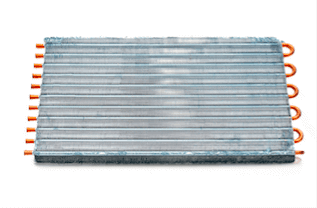Coil corrosion can pose a silent threat to some of the most expensive components in your HVAC system. The evaporator coil is sealed inside the indoor air handler and the condenser coil located in the outdoor half of the system circulates refrigerant critical to the air conditioning process. Copper tubing incorporated in these coils is very reactive to certain elements and corrosion may gradually deteriorate, eventually causing refrigerant leaks that disable the system.
How Does Coil Corrosion Happen?
Inside the air handler, the airflow passing through the evaporator coil carries trace amounts of airborne chemicals emitted by detergents, cleaners, carpeting, and construction materials common in the indoor environment. When these substances combine with liquid condensate present on coil surfaces, an acidic process can gradually deteriorate the copper tubing, causing pinhole leaks.
Outdoors, the condenser coil gets year-round exposure to natural elements here in San Jose, salt molecules from ocean air can be a factor.
Additionally, the accumulated effect of manmade air pollutants such as:
- Fluoride
- Chlorine
- And acidic rainfall
The combined effect can deteriorate copper and trigger coil leakage.
Preventing HVAC Coil Corrosion
Enclosed within the air handler, the indoor evaporator coil is easily accessed for DIY inspection. However, as part of regular annual preventive maintenance, a qualified HVAC technician can check the coil for corrosion and clean it with a pH-balanced coil cleaner to neutralize acids that may pit copper coil surfaces. As an added plus, annual coil cleaning restores energy efficiency and cooling performance, too.
The outdoor unit is more exposed to elements but also more accessible for basic maintenance. After shutting off power to the condenser at the main switch, the side panels can be opened with a screwdriver, and internal coil surfaces flushed with water from a garden hose.
When done once or twice a year, this simple preventive measure removes damaging acidic residue from the coil and helps prevent corrosion. Always let the unit dry before restoring electricity and turning on the system.
For more about the prevention of damaging coil corrosion, in the South Bay Peninsula and Santa Cruz contact our team at Valley Heating, Cooling, Electrical.

